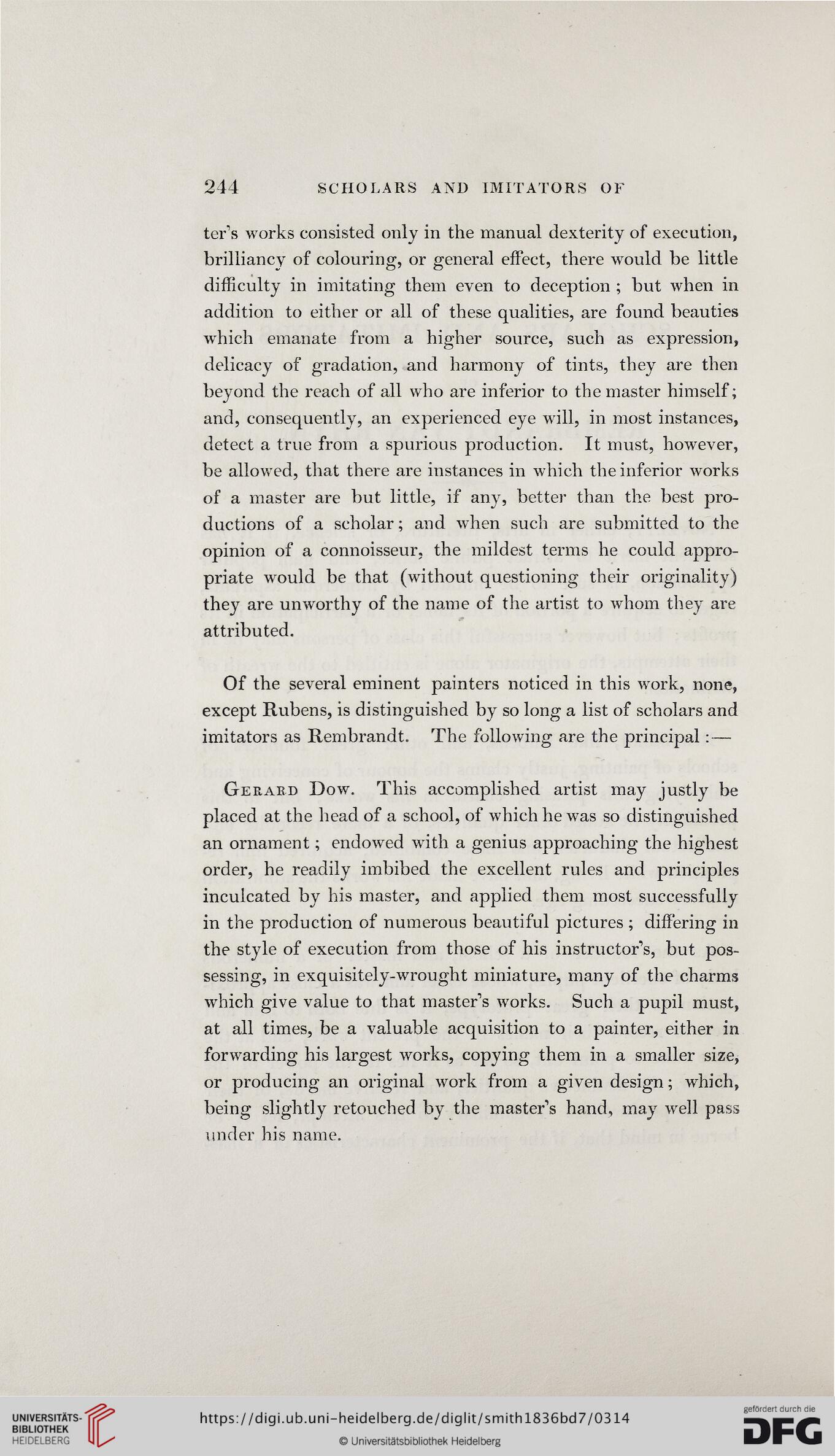244
SCHOLARS AND IMITATORS OF
ter’s works consisted only in the manual dexterity of execution,
brilliancy of colouring, or general effect, there would be little
difficulty in imitating them even to deception ; but when in
addition to either or all of these qualities, are found beauties
which emanate from a higher source, such as expression,
delicacy of gradation, and harmony of tints, they are then
beyond the reach of all who are inferior to the master himself;
and, consequently, an experienced eye will, in most instances,
detect a true from a spurious production. It must, however,
be allowed, that there are instances in which the inferior works
of a master are but little, if any, better than the best pro-
ductions of a scholar; and when such are submitted to the
opinion of a connoisseur, the mildest terms he could appro-
priate would be that (without questioning their originality)
they are unworthy of the name of the artist to whom they are
attributed.
Of the several eminent painters noticed in this work, none,
except Rubens, is distinguished by so long a list of scholars and
imitators as Rembrandt. The following are the principal: —
Gerabd Dow. This accomplished artist may justly be
placed at the head of a school, of which he was so distinguished
an ornament; endowed with a genius approaching the highest
order, he readily imbibed the excellent rules and principles
inculcated by his master, and applied them most successfully
in the production of numerous beautiful pictures; differing in
the style of execution from those of his instructor’s, but pos-
sessing, in exquisitely-wrought miniature, many of the charms
which give value to that master’s works. Such a pupil must,
at all times, be a valuable acquisition to a painter, either in
forwarding his largest works, copying them in a smaller size,
or producing an original work from a given design; which,
being slightly retouched by the master’s hand, may well pass
under his name.
SCHOLARS AND IMITATORS OF
ter’s works consisted only in the manual dexterity of execution,
brilliancy of colouring, or general effect, there would be little
difficulty in imitating them even to deception ; but when in
addition to either or all of these qualities, are found beauties
which emanate from a higher source, such as expression,
delicacy of gradation, and harmony of tints, they are then
beyond the reach of all who are inferior to the master himself;
and, consequently, an experienced eye will, in most instances,
detect a true from a spurious production. It must, however,
be allowed, that there are instances in which the inferior works
of a master are but little, if any, better than the best pro-
ductions of a scholar; and when such are submitted to the
opinion of a connoisseur, the mildest terms he could appro-
priate would be that (without questioning their originality)
they are unworthy of the name of the artist to whom they are
attributed.
Of the several eminent painters noticed in this work, none,
except Rubens, is distinguished by so long a list of scholars and
imitators as Rembrandt. The following are the principal: —
Gerabd Dow. This accomplished artist may justly be
placed at the head of a school, of which he was so distinguished
an ornament; endowed with a genius approaching the highest
order, he readily imbibed the excellent rules and principles
inculcated by his master, and applied them most successfully
in the production of numerous beautiful pictures; differing in
the style of execution from those of his instructor’s, but pos-
sessing, in exquisitely-wrought miniature, many of the charms
which give value to that master’s works. Such a pupil must,
at all times, be a valuable acquisition to a painter, either in
forwarding his largest works, copying them in a smaller size,
or producing an original work from a given design; which,
being slightly retouched by the master’s hand, may well pass
under his name.




